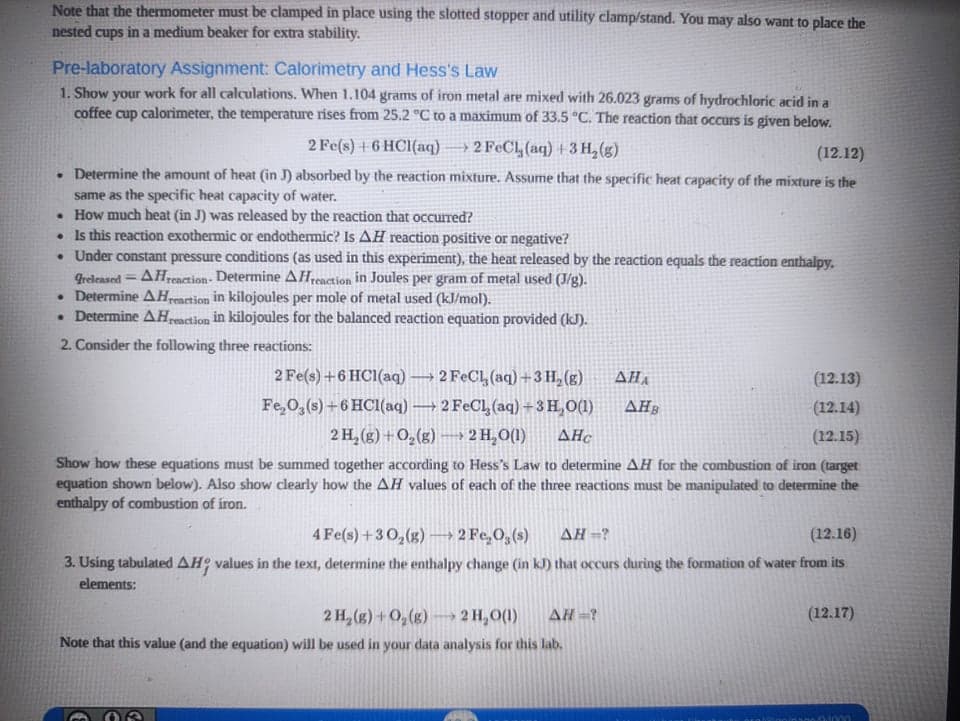1. Show your work for all calculations. When 1.104 grams of iron metal are mixed with 26.023 grams of hydrochloric acid in a coffee cup calorimeter, the temperature rises from 25.2 °C to a maximum of 33.5 °C. The reaction that occurs is given below 2 Fe(s) +6 HC1(aq) → 2 FeCL(aq) + 3 H, (g) (1 • Determine the amount of heat (in J) absorbed by the reaction mixture. Assume that the specific heat capacity of the mixture same as the specific heat capacity of water. How much heat (in Duac mleace
Thermochemistry
Thermochemistry can be considered as a branch of thermodynamics that deals with the connections between warmth, work, and various types of energy, formed because of different synthetic and actual cycles. Thermochemistry describes the energy changes that occur as a result of reactions or chemical changes in a substance.
Exergonic Reaction
The term exergonic is derived from the Greek word in which ‘ergon’ means work and exergonic means ‘work outside’. Exergonic reactions releases work energy. Exergonic reactions are different from exothermic reactions, the one that releases only heat energy during the course of the reaction. So, exothermic reaction is one type of exergonic reaction. Exergonic reaction releases work energy in different forms like heat, light or sound. For example, a glow stick releases light making that an exergonic reaction and not an exothermic reaction since no heat is released. Even endothermic reactions at very high temperature are exergonic.
Pre-laboratory Assignment: Calorimetry and Hess’s Law

Trending now
This is a popular solution!
Step by step
Solved in 2 steps with 1 images









